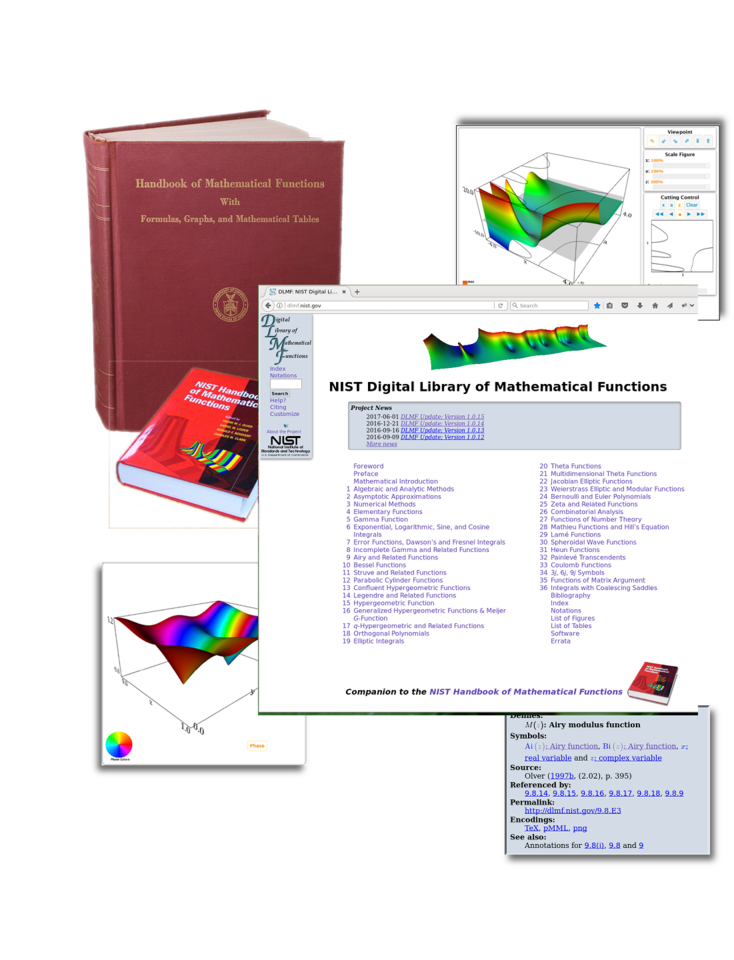Digital Library of Mathematical Functions
Date: 2010
In 2010, NIST released the Digital Library of Mathematical Functions (DLMF), an online successor to the classic Abramowitz and Stegun Handbook of Mathematical Functions.

The special functions of applied mathematics are ubiquitous in theoretical research in all branches of science and engineering. For many years the NBS Handbook of Mathematical Functions (M. Abramowitz and I. Stegun, eds., 1964) was the main reference on the notation and properties of these functions. By the late 1990s it was still the most widely distributed and cited publication of all time, regularly seeing more than 2000 citations per year. But it was out-of-date. The previous 40 years had seen a good deal of research uncovering new knowledge about special functions, and a number of new functions had begun to see widespread use in applications. More than half of the Handbook’s pages were devoted to tables of mathematical function values, rarely needed in the age of high-speed computers. Finally, the advent of the World Wide Web had provided new opportunities for widely distributing reference data.
With this in mind, NIST decided to bring the Handbook into the 21st century as an interactive online resource. NIST worked with some 50 external researchers to plan the project, to survey the literature, draft the technical content, and validate it. NIST staff edited the material and developed it into an online resource with extensive internal links, external links to references and software, interactive graphics, and a unique math-based search engine. The result was released in 2010 and is now in the toolbox of many working scientists. See https://dlmf.nist.gov/. A printed subset of the online material was published by Cambridge University Press as the NIST Handbook of Mathematical Functions.
References
- M. Abramowitz and I. Stegun, eds. Handbook of Mathematical Functions with Formulas, Graphs, and Tables. Applied Mathematics Series Volume 55, National Bureau of Standards, 1964.
- F. W. J. Olver, D. W. Lozier, R. F. Boisvert, and C. W. Clark. NIST Handbook of Mathematical Functions. Cambridge University Press, 2010.
- R. Boisvert, C. W. Clark, D. Lozier, and F. Olver. A Special Functions Handbook for the Digital Age. Notices of the AMS, August 2011, 905-911.
- B. I. Schneider, B. R. Miller, and B. V. Saunders. The NIST Digital Library of Mathematical Functions: A 21st Century Source of Information on the Special Functions of Mathematical Physics. Physics Today, Vol 71, No. 2, 2018, 48.


